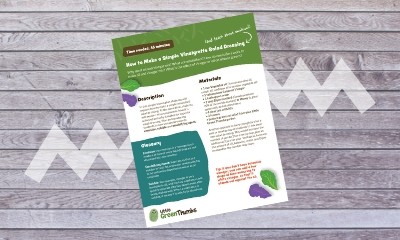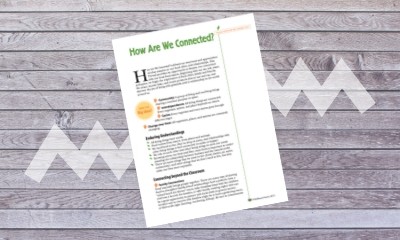
By Big Green
In this lesson students will…
- be able to define tasting etiquette
- describe why we practice good etiquette when eating
- create classroom tasting etiquette guidelines
Eating together as a class is a wonderful opportunity to teach about respect, manners, and mindful eating. Providing your students with a mindful and caring space to enjoy food will help to set a foundation for lifelong healthy eating habits for your students. This activity gives students a chance to create guidelines that they think are important to follow before, during, and after eating.

Lesson by Big Green.
In this lesson, students will identify that plants need specific things to grow into a healthy plant.
- Plants need L.A.W.N.S.: light, air, water, nutrients, and space to grow.
- Air and water serve a vital role in the growth process.
There is an easy acronym to help remember basic plant needs (the things that plants need to survive and thrive): L.A.W.N.S.

Lesson Plan By Kid’s Gardening
Students will learn about how light is important to plants, and how both quality and quantity of light affect plant growth.
Students will:
- Learn about variations in light quality and quantity
- Design and conduct experiments using grow lights to demonstrate the impact of variations in light on plant growth.
- Draw conclusions about the best and most efficient source of light for plants.
Time needed: 6-8 weeks

Make your own salad dressing and study emulsion along the way.
It’s simple and easy enough for your small children to make.. and it’s an opportunity to be scientists and chefs.
If you’ve got a bit more time try these simple activities with your students and explore why oil and vinegar don’t mix naturally, how you can get them to mix and what makes a great salad dressing.
This resource is suitable for Grade 2-6 students and will explore the concept of emulsion. Can be adapted to younger grades.

How are We Connected? is a teachers resource to help students develop an understanding of and appreciation for where our food and fibers come from. Students learn about the ideas of community, interdependence, cycles, and how all things change over time. There are over 75 “facilitated learning experiences” organized around four “threads” that flow through the seasons: Who Are We?, Who Lives Here?, What’s Happening?, and How Are We Connected?





